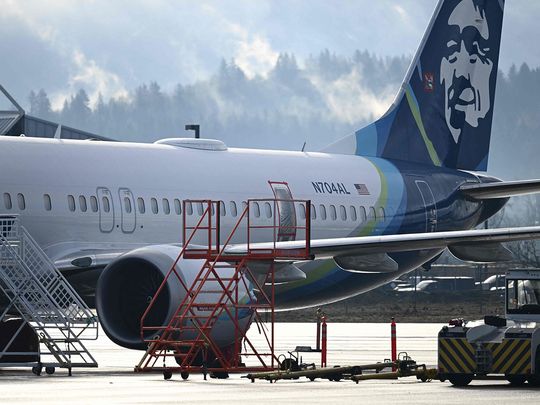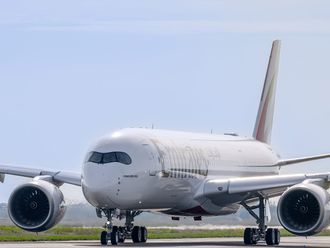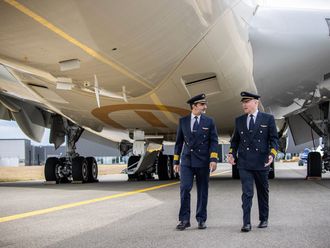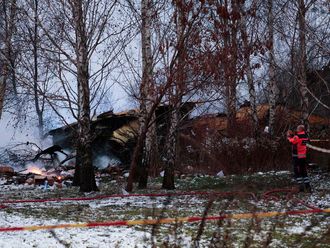
Boeing Co. is due to submit a plan to US regulators to address quality breakdowns in its factories, a key step in the planemaker's effort to recover from a crisis sparked by a near-disaster on an airborne 737 Max at the start of this year.
Senior Boeing leaders, including Chief Executive Officer Dave Calhoun and Stephanie Pope, the head of its commercial airplane business, are slated to discuss the corrective action plan with Federal Aviation Administration Chief Michael Whitaker at the agency's headquarters in Washington on Thursday.
The embattled planemaker is working to regain the confidence of customers, regulators and lawmakers after months of bruising publicity involving its 737 Max aircraft, a critical source of revenue. Boeing workers have also flagged other quality issues at its factories, including allegedly skipped or improper inspections of its 787 Dreamliners.
"We anticipate the FAA will take whatever time is necessary to review that plan and hold us accountable to the various control parameters that are put in place as we move forward," Calhoun said at Boeing's annual general meeting earlier this month. "This is more of a beginning than it is an end."
The cascading issues have added to the financial strain on Boeing, which is on pace to burn through about $8 billion in cash during the first half of 2024. The board is searching for a successor for Calhoun, who plans to step down as CEO later this year as part of a broader leadership shakeup brought on by the crisis.
Traveled Work
The planemaker has drastically slowed 737 production and stepped up inspections at supplier Spirit AeroSystems Holdings Inc., which makes most of the jet's body. The company has added employee training sessions and is simplifying instructions for workers, many of whom are recent hires.
Boeing has also cracked down on out-of-sequence manufacturing known as traveled work, no longer accepting airframes with missing parts or incomplete work from Spirit. In addition, the company has said it plans to buy back Spirit in order to regain full control of the company.
The FAA has said it won't allow Boeing to raise 737 output above pre-crisis production rates until officials are convinced the manufacturer has adequate quality controls in place.
The FAA in late February gave Boeing 90 days to craft a framework to address quality control issues that came to light after a door plug blew out of a nearly-new 737 Max in early January. The accident on an Alaska Airlines flight exposed poor workmanship on its marquee narrowbody.
"Boeing must commit to real and profound improvements," Whitaker said at the time.
Whitaker is slated to brief lawmakers on the House Transportation and Infrastructure Committee on June 4 about Boeing's plan, according to a spokesman for the committee.
The Alaska aircraft left Boeing's factory without four bolts that would have held the fuselage panel in place. The planemaker has said it has no formal log of the work that required opening the door plug "- a serious violation of its procedures. Without the written work orders, the company's quality inspectors wouldn't have known to check on the repair, or spot the missing bolts.
The FAA also instructed Boeing executives to address problems with its safety culture identified following a yearlong study by a panel of aviation and labor experts.
In a scathing report, the group detailed a disconnect between senior managers and workers that prevented bad news from traveling upward from the factory floor. Many employees didn't trust the anonymity of an internal program for reporting safety concerns known as "Speak Up," calling its effectiveness into question.












